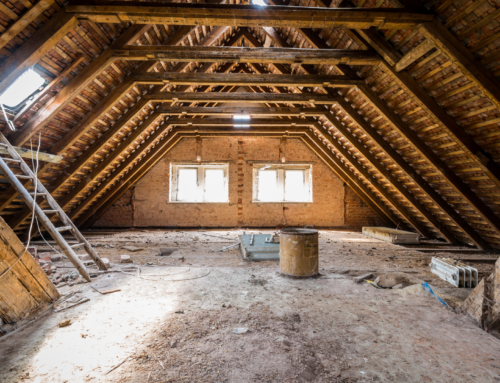If you’re considering a bore pump for your property, it’s probably because you want a reliable way to access water for irrigation, livestock, or household use. But with so many options on the market, how do you know which one is the best fit? Bore pumps aren’t one-size-fits-all, and making the wrong choice can leave you with a pump that doesn’t quite meet your needs—or costs you more than you bargained for.
What Is a Bore Pump, and Why Does It Matter?
A bore pump is designed to draw water from underground bores or wells. Bore pumps Perth are essential for properties that rely on groundwater as a primary water source. Whether you’re watering crops, filling troughs for livestock, or providing water for daily household activities, a bore pump gives you dependable access to what lies beneath the surface.
But here’s the thing: choosing the right bore pump isn’t just about picking one that looks good on paper. You need a pump that matches your specific requirements, from the depth of your bore to how much water you’ll actually need.
Key Factors to Consider Before You Buy
Before you start shopping, there are a few things to think about. Getting clear on these will help narrow your options and ensure you end up with the perfect pump for your property.
1. Bore Depth
How deep is your bore? This is one of the first questions you’ll need to answer. Shallow bores (less than 25 metres) have different requirements than deeper ones. For shallow setups, a jet pump might work fine, but deeper bores often need a submersible pump designed to handle the increased water pressure and lift.
2. Water Requirements
How much water do you need daily? Think about your property’s specific demands. If you’re running a small hobby farm, your water needs will be vastly different from those of a large agricultural operation. Factor in peak usage times, such as during the dry season or when irrigation is in full swing.
3. Water Quality
Not all bore water is the same. Some water may contain sediments, minerals, or other impurities. Submersible pumps often come with features to handle poor water quality, while other types may require extra filtration systems. Understanding your water’s composition can save you from headaches later on.
4. Power Supply
Do you have easy access to electricity on-site, or is solar power a better option? Bore pumps can be powered in several ways—electricity, solar energy, or even diesel generators. Solar-powered pumps are a fantastic option for off-grid properties or anyone looking to reduce ongoing costs.
5. Budget and Maintenance Costs
While it’s tempting to focus on the upfront cost of a pump, remember to think long-term. A cheaper pump might have higher maintenance costs or a shorter lifespan, whereas a slightly more expensive, high-quality model could save you money in the long run.
Types of Bore Pumps to Choose From
Once you’ve got a clear picture of your property’s needs, it’s time to explore the different types of bore pumps. Here’s a closer look:
- Submersible Bore Pumps – These pumps are installed underwater inside the bore, making them ideal for deep wells. They’re quiet, efficient, and can handle significant water volumes. If your bore is deeper than 25 metres, this is likely your best bet.
- Jet Pumps – These are installed above ground and are typically used for shallow bores. They’re a good option if you don’t need to draw water from a great depth, but they’re not as effective for higher water demands.
- Solar Bore Pumps – Perfect for remote or off-grid properties, solar pumps use renewable energy to keep water flowing. They’re a bit pricier upfront but can save you heaps on electricity costs over time.
- Centrifugal Pumps – Often used for high-flow, low-pressure needs, these pumps are ideal for irrigation systems. They’re not suitable for deeper bores but can work well in other situations.
- Helical Rotor Pumps – If your bore water contains a lot of sand or silt, this type might be a good choice. They’re designed to handle water with solid particles without wearing out quickly.
Tips for Installing Your Bore Pump
Once you’ve chosen your pump, installation is the next step. While some DIY enthusiasts may feel confident tackling the job, professional installation is usually the safest option. This ensures your pump is set up correctly, operates efficiently, and meets any local regulations.
Make sure to:
- Get a proper bore test. This will tell you the depth, yield, and quality of your water, which is critical for sizing your pump.
- Ensure a secure power connection. If you’re using an electric pump, you’ll need a reliable power source. Solar systems should also be installed with adequate panels and backup options.
- Check for leaks or blockages. Regular maintenance will keep your pump running smoothly and help you avoid costly repairs.
Why Choosing the Right Pump Is Worth It
A bore pump is an investment in your property, and getting it right will pay off for years to come. The right pump ensures reliable water access, reduces waste, and keeps your energy costs manageable. It also prevents the frustration of dealing with an undersized or overworked pump that can’t handle the job.
So, what’s the next step? Take the time to assess your property’s unique needs, consult with a professional if needed, and choose a pump that ticks all the boxes. A little extra effort now will save you time, money, and hassle down the road.
Water on Tap: Your Property’s New Best Friend
Choosing the right bore pump might seem like a big decision, but with the right approach, it’s entirely manageable. By understanding your bore’s depth, water requirements, and the available pump types, you’re well on your way to finding the perfect solution. Remember, this isn’t just about picking any pump—it’s about making sure your property has a reliable, efficient water source for years to come.






Leave A Comment